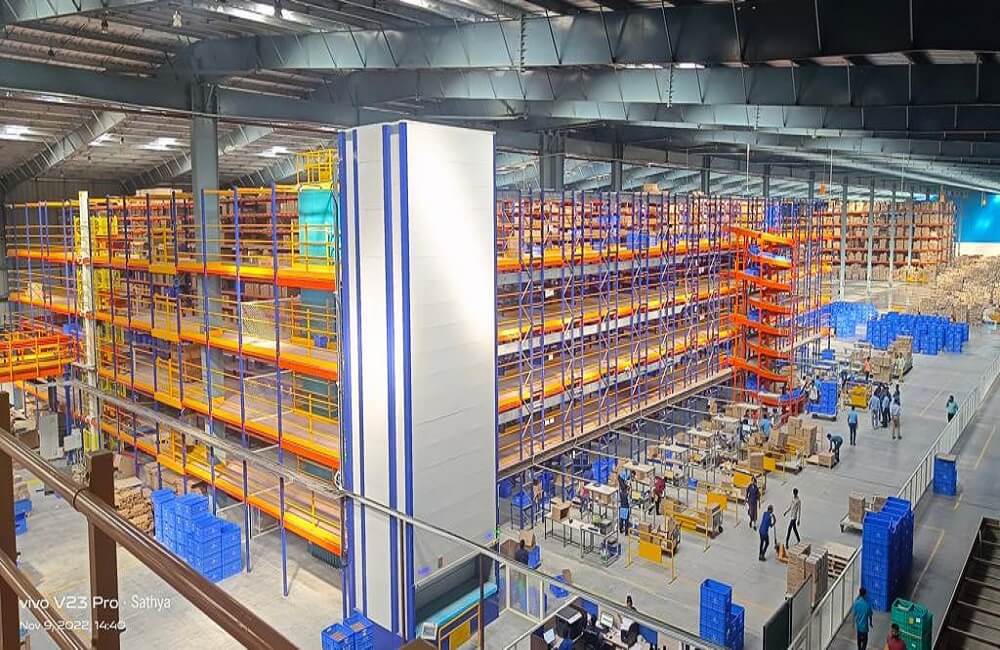Adapting to the evolving supply chain, businesses must embrace innovative solutions and leverage a reliable logistics provider's expertise to thrive and deliver exceptional customer experiences.
The rise of e-commerce has revolutionized the retail industry, offering consumers unparalleled convenience and accessibility. As the global e-commerce market continues to grow, the supply chain landscape faces new opportunities and challenges. One notable development is the significant growth of the direct-to-consumer (D2C) segment, with third-party logistics (3PL) companies playing a crucial role in supporting its advancement. Over the next few years, segments like D2C and untapped e-commerce categories are projected to expand by 50-60%. This growth is fueled by more category-building brands coming at the foray, as well as brands and marketplaces expanding into Tier II, III, and IV cities, as well as rural areas worldwide.
However, the evolving e-commerce supply chain also presents challenges that need to be addressed. One such challenge is ensuring exceptionally reliable customer experience with time definite parcel deliveries. There is a constant evolution to reduce the time it takes for e-commerce parcels to reach the end consumer, which often leads to increased supply chain costs across miles. To address this challenge, third party logistics companies are putting excessive focus on designing and optimizing supply chain networks with data-science and AI/ML led solutions providing efficient designs and patterns to handle node-level load variability and ensure that cost to deliver a time-bound consumer experience is reduced.
Another significant challenge in the e-commerce supply chain is building robust supply chain networks to cater to tier-II and beyond. India being a large market, external factors such as traffic congestion, unstructured addresses, and limited delivery time windows impede the seamless functioning of supply chains across deeper regions of India. Third party logistics providers utilize advanced route planning algorithms, real-time tracking, and trained delivery personnel to ensure timely and accurate product delivery to customers’ doorsteps. In several areas, human intelligence feeds advanced algorithms to help navigate this challenge of building networks for real India that can be used by online sellers. However, the most important success factor for a D2C brand looking to expand to real India is to have an exceptionally reliable third-party logistically partner to help them grow.
Inefficiencies in order fulfilment is another critical challenge for e-commerce businesses due to the variations in the volume of online orders. Balancing inventory, demand forecasting, and maintaining optimal stock levels can be complex, leading to delays in order processing and customer dissatisfaction. Third party logistics companies that offer a suite of solutions in warehousing and shipping are normally able to help address this challenge by optimizing inventory levels, reducing carrying costs, and optimum level of inventory when and where it is needed.
Lack of supply chain visibility right from online order placed by a shopper to transparency across supply chain till delivery of parcels, there is a significant role that technology-driven solutions can play. Order management systems (OMS) and warehouse management systems (WMS) enable businesses to track shipments in real-time, access analytics and insights to grow their business cohorts, and seamlessly manage inventory. These solutions empower D2C brands to make informed decisions, optimize operations, and deliver exceptional customer experiences.

Chief Operating Officer
Ecom Express Limited
The rise of e-commerce has also led to a surge in product returns, requiring efficient management of reverse logistics. This includes handling return shipments, product inspection, and facilitating reconciliation or exchanges. Streamlined processes are essential to minimize costs and ensure customer satisfaction. By establishing well-defined processes for handling returns, conducting quick inspections, and providing seamless refunds or exchanges, businesses can efficiently handle product returns and foster customer loyalty.
Third party end-to-end logistics solution providers in e-commerce support D2C growth through innovative strategies and technology. Adapting to the evolving supply chain, businesses must embrace innovative solutions and leverage a reliable logistics provider’s expertise to thrive and deliver exceptional customer experiences.



